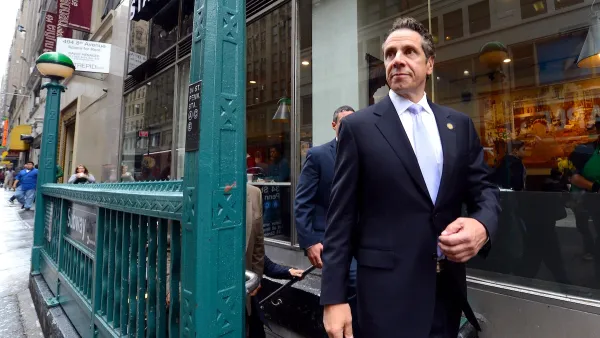Rather than shuttling stormwater away from the city and into the ocean as quickly as possible, Los Angeles is now—slowly—moving toward a ‘city-as-sponge’ approach that would capture and reclaim more water to recharge crucial reservoirs.

A program that installed green infrastructure in Los Angeles alleyways got its first real test last month as massive storms pummeled the region, bringing rain that overwhelmed much of Southern California’s stormwater infrastructure. As Alissa Walker writes in Curbed, thanks to the “green alleys” installed as part of a 2015 project in South Los Angeles, “the resulting stormwater had more opportunities to sink back into the earth: filtering through a row of permeable pavers, directing to pocket planters where creeping fig vines twirl up garage walls, or vanishing into grates labeled ‘drains to groundwater.’”
Walker explains that “a single green alley is able to capture enough stormwater per year to store it in dry wells below the pavers where it can slowly percolate into the groundwater, says Allen Compton, founder of the landscape architecture firm SALT, which designed these alleys.” The alleys connect to the South L.A. Wetlands Park, another key piece of green infrastructure that collects stormwater and provides habitat for local wildlife.
As storms become more intense and unpredictable, paved-over cities like Los Angeles can use permeable materials and sustainable design elements to capture and reclaim stormwater more effectively, recharge groundwater reserves, and prevent damaging floods. But “Because stormwater is still erroneously classified as a waste product, its management is handled by the same department that picks up the trash,” while other efforts are scattered across city and county agencies. According to Walker, Los Angeles is developing an interagency stormwater plan that would streamline and coordinate stormwater management efforts.
FULL STORY: L.A.’s ‘Green Alley’ Experiments Are Working”

Planetizen Federal Action Tracker
A weekly monitor of how Trump’s orders and actions are impacting planners and planning in America.

Maui's Vacation Rental Debate Turns Ugly
Verbal attacks, misinformation campaigns and fistfights plague a high-stakes debate to convert thousands of vacation rentals into long-term housing.

Cuomo Is the Candidate of Both NIMBYs and Developers. What Gives?
In the New York City mayoral race, odd bedfellows align to preserve the housing status quo.

The Subversive Car-Free Guide to Trump's Great American Road Trip
Car-free ways to access Chicagoland’s best tourist attractions.

San Antonio and Austin are Fusing Into one Massive Megaregion
The region spanning the two central Texas cities is growing fast, posing challenges for local infrastructure and water supplies.

Charlottesville Temporarily Has No Zoning Code
A judge ordered the Virginia city to throw out its newly revised zoning code, leaving permitting for new development in legal limbo.
Urban Design for Planners 1: Software Tools
This six-course series explores essential urban design concepts using open source software and equips planners with the tools they need to participate fully in the urban design process.
Planning for Universal Design
Learn the tools for implementing Universal Design in planning regulations.
Heyer Gruel & Associates PA
JM Goldson LLC
Custer County Colorado
City of Camden Redevelopment Agency
City of Astoria
Transportation Research & Education Center (TREC) at Portland State University
Jefferson Parish Government
Camden Redevelopment Agency
City of Claremont



























